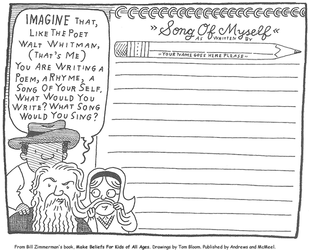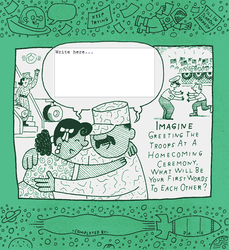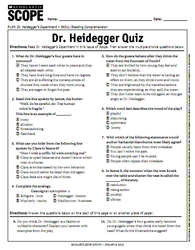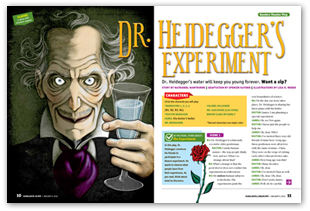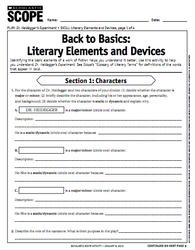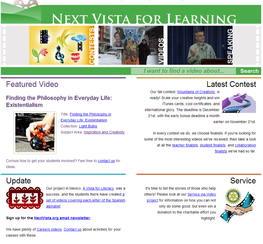 Next Vista for Learning is a growing website that offers access to hundreds of FREE videos created by and for teachers and students. The videos are acquired through ongoing contests held by Next Vista, so it is constantly expanding and promises to grow with time. One thing that I really like about this site is that it promotes students are creators, and not just consumers, of digital media, which can be very empowering. If students already possess the knowledge that needs to be taught, then let them design videos based on how they would want to learn. Kids know how other kids want their information delivered, so it makes sense to put them in the driver's seat. Video production could be easily modified depending on students' comfort level with technology. Beginners could use Web 2.0 tools, such as Animoto, or could record their videos with a camcorder; more advanced students could edit with programs such as iMovie or Windows Movie Maker to create transitions, animations, and themes. I could see myself having students create videos for Next Vista for Learning, and then embedding these videos or linking to them on my classroom website. Creating these videos would be a great way to review content for exams, and these videos would become great anticipatory activities for following school years. Note: Contests are held in the category of teacher-created, student-created, and collaboration videos.
0 Comments
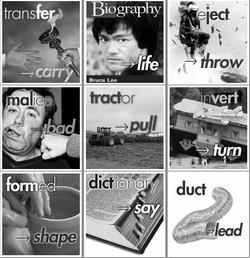 Recently, I discovered a vocabulary website called Membean. The site offers personalized vocabulary lessons to help with preparation for the SAT, the GRE, or general vocabulary improvement for both individuals and schools. The vocabulary lessons are visually stunning and very interactive; however, they are not free. Personally, I know that my school simply cannot afford to pay for tailored vocabulary development for each student, but Membean's format has given me the idea of setting up a vocabulary wiki and having my students create their own interactive vocabulary pages, including definitions, pictures, videos, sentences with context clues, etc. If your school has money to spend, by all means, it appears to be well worth the money, but I know for some of us, spending even a penny more isn't an option. With that said, let me tell you what Membean has for free. (Doesn't the word "free" have a beautiful ring to it?) Membean has a wonderful collection of podcasts featuring different root words. (Thanks, Membean!) I plan to use a study in roots, prefixes, and suffixes as an integral part of my vocabulary curriculum this upcoming school year. In fact, I plan to use Membean's podcasts as a bellringer activity in my classroom by having students make note cards to record the meaning of each root word. I'll have students record the root, its meaning, and definitions of multiple words based on that root; they will also draw an illustration to accompany the root word. Students will be given an online pretest to assess prior knowledge, and will be retested throughout the school year to measure to assess growth. Below, I am sharing the template that my students will use to create the note cards. As always, feel free to copy/print/distribute. Word Root of the Week View more PowerPoint from jesspilgreen 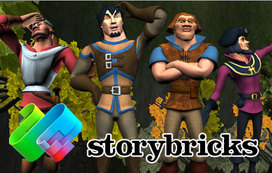 A few weeks ago, I saw a post on an educational blog (probably Free Tech 4 Teachers) about StoryBricks, an online program that allows users to create their own MMOs. If you are a gamer--or, in my case, married to one--then you already know what an MMO is. If not, then allow me to explain: an MMO is a Massive Multiplayer Online game. Basically, it is a game played online by multiple players at once; the players' characters are able to interact with one another to make the story really come to life. Think World of Warcraft or Guild Wars. Now, I might not be the die-hard gamer that several of my friends and family members are (yes, even my mom is a gamer) but this definitely caught my attention! With the buzz around gaming in education, and the push for increased computer science (STEM) in schools, I was curious to check out this new option. One of the most intriguing aspects of StoryBricks is that users don't simply play the game; they build the game using basic concept of computer programming. Once I signed in and began playing around, the interface really reminded me of Scratch. Scratch is a "computer programming language learning environment" created by MIT, which has been used in schools to introduce youngsters to the concepts behind computer programming. StoryBricks, on the other hand, seems to be aimed at an older demographic. I predict that this will be used mostly in middle school and high school classrooms. As many students in this age group are already playing MMOs, introducing the complexities of computer programming through this format is sure to spark some students' interests. I'm not a computer science teacher, so my first thought was "That's great, but how can I use this in my English classroom?" The first idea that came to mind was using StoryBricks as a digital storytelling tool; I could have students create their own interactive myths or legends. I also notice that the commands that are used to build the stories really enforce logical thinking (if-then statements, for example). I also thought about the revision process that students would undergo in order to get their stories to turn out well. In short, there are many reasons why StoryBrick would make a good edition to the English classroom. If nothing else, pose it as a challenge to the uninterested student who hates homework but loves computers; have him* work on a story during his "free time" and see where it takes him. Below, I have embedded a brief screenshot of myself experimenting with StoryBricks. It's best viewed if you imagine some incredibly suspenseful, adventurous music as you watch... *or her, because computer superstars come in all shapes and sizes  I recently discovered ImageSpike after reading about it on the Free Technology for Teachers blog, and I can see endless possibilities with this tool! This would be a wonderful way to make my images more interactive. According to the website, ImageSpike allows users to "mark up" photos with "interactive hotspots." This sounds confusing at first, but it's easy to understand the concept once you see a "spiked" image. It's also very easy to create one. To spike an image, first upload a picture from your PC or supply the URL address. Next, click on areas of the picture to create "hot spots." Hot spots are dots that appear on your image. When you hover over the dot, a link appears. You can link these hot spots to videos, web pages, images, etc. Again, just supply the URL for the content you want to link to the hot spot. It's multimedia on steroids. Below is my first ever "spiked" image--a photo of Bernini's The Rape of Proserpina. This shows how I would use ImageSpike in my own classroom: to link resources to an image, keeping my information organized and visually stimulating. I could also see having students create images loaded with their own hot spots; this could take place of a standard poster board presentation, or could be used as part of a student presentation. I could also have students visit a "spiked" image (similar to the image below) and then take notes or answer questions related to the media that students are directed to. This would also work great with maps; I already have plans to create a spiked image of the journey of Odysseus to use this upcoming school year. How will you use ImageSpike?   SMORE is a new online program that allows you to design dynamic online newsletters for free. (ah, free! one of my favorite words, especially when it comes to education!) Right now, you have to request membership and wait to be approved before you can use Smore, but it is well worth the wait! Although Smore bills itself as a tool for creating flyers, it could be used to create any sort of web document; this would be an excellent site for creating a classroom webpage or a class/school newsletter. The themes are beautiful and simple, giving the pages a clean and modern look. Editing content is as easy as using Power Point, so even the web novice would be able to build online documents with ease. More experienced with building web pages? Try spicing up your newsletter by embedding pictures, links, or videos. Another great feature is that viewers can leave comments on the newsletter through Facebook, creating real-time feedback from viewers. NOTE: I'm currently using Smore to build the newsletter for the members of my local chapter of the National Writing Project. You can view my document HERE. A Cupcake Story from Smore on Vimeo. 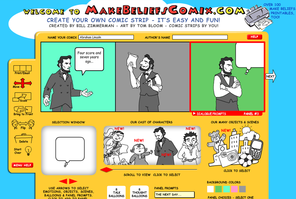 MakeBeliefComix is a great website for creating comics and discovering writing prompts. This site offers tons of free black-and-white printables that can be photocopied and colored (using markers and crayons saves printer ink!). You can also generate your own original comic strips by choosing from their existing selection of characters, objects and speech bubbles. Another great feature are the Digital Writeables, which allow visitors to complete a comic by typing in their text and printing. One wonderful addition that sets this website apart from others is that it features a section for students with special needs, explaining how this site can be used to help all learners express their thoughts. There is also another great section for educators that gives tips on how to use comics in the classroom. 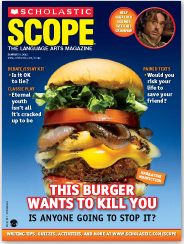 By visiting Scholastic Scope online, viewers have access to tons of free resources, including PDF files of stories and readers' theater pieces, vocabulary and grammar worksheets, ACT-style quizzes, essay writing prompts, and much much more! I'm truly amazed that there is no log-in required to view these materials. There is even information regarding how the materials align with the Common Core State Standards. According to the website, these materials will be password-protected in the future, so visit their website and save these files while it's free! I plan on using many of the resources (my school has a subscription, so I will be able to access information even after it is password-protected); I'm particularly interested in the readers' theater pieces because they are a great way to expand students' background knowledge regarding literary masterpieces. 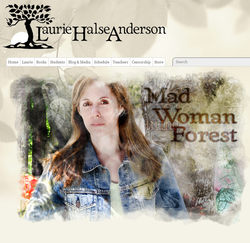 Laurie Halse Anderson has published numerous writing prompts, as well as tips about the writing process, on her blog--Mad Woman in the Forest--where she challenges individual to Write Fifteen Minutes a Day for a full month. Anderson tackles topics, such as writer's block, overcoming distractions, and making time to write. Other writing prompts are more traditional, such as character or setting sketches. It's definitely the prompts about being a writer and engaging in the writing process that I was the most impressed with. As teachers, I think we tend to focus on the process of writing without ever addressing the difficulty of writing and how to overcome potential obstacles. Students begin to view as an innate skill that they are either born with, or are not; and they believe that good writers never deal with "issues." Anderson, as a very successful author of young adult literature, does a great job of "naming the beast," so to speak, and getting writers to confront the difficulties associated with writing. 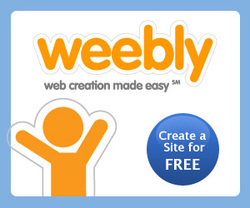 Obviously, I love Weebly! I've created several websites--including this one--using Weebly. In my opinion, Weebly is hands-down the easiest website creation tool available, and I've been trying to get Weebly into the hands of as many educators as I can over the last year. My colleagues love it because the drag-and-drop interface is so intuitive, and Weebly offers so many multimedia features--all for free. This year, I plan on having some of my students create their own blogs and, when I do, I will be printing out the tutorial embedded below to get them started; I've used the document previously during workshops with other teachers in my district. Note: Please feel free to print, share, copy, embed, etc. the document. 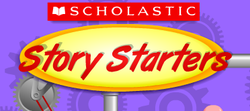 Scholastic Story Starters is a great interactive way to inspire student writing. The website randomly generates writing prompts based on four variables: a genre, a descriptive word, a main character, and a complication. I've paid money for a similar flip-books that does the exact same thing that this website does for free. (It's not that I wouldn't also recommend the flip book, but why pay for things you can get for free?) In my own classroom, I have a random writing assignment based on the story starter called a 1-2-3 Write About (the flip books have 3 variables, rather than the 4 that the Scholastic website has). It's great for fostering creativity, and when I want to challenge my students a little bit more, I have them use their vocabulary words, a minimum number of "smiley-face tricks" or punctuation marks, etc. It's a fun way to make grammar more interesting, and my students generally enjoy sharing their stories with each other. One great feature is that this website varies writing prompts based on grade level, beginning with Kindergarten and going up through sixth grade (although I would use the 4-6 prompts even with my high school freshmen). Scholastic also allows users to change any one of the elements that is randomly chosen, giving the writer more freedom regarding his or her topic. Once a story starter is selected, the writer can select a layout (notebook, letter, newspaper, or postcard) and can type on the website for a professional-looking document. There is also an option to add a place holder for artwork to each document, if you want to include an art component to the writing assignment. |
AuthorDr. Jessica Pilgreen, Ed.D. Archives
December 2020
Categories
All
|
